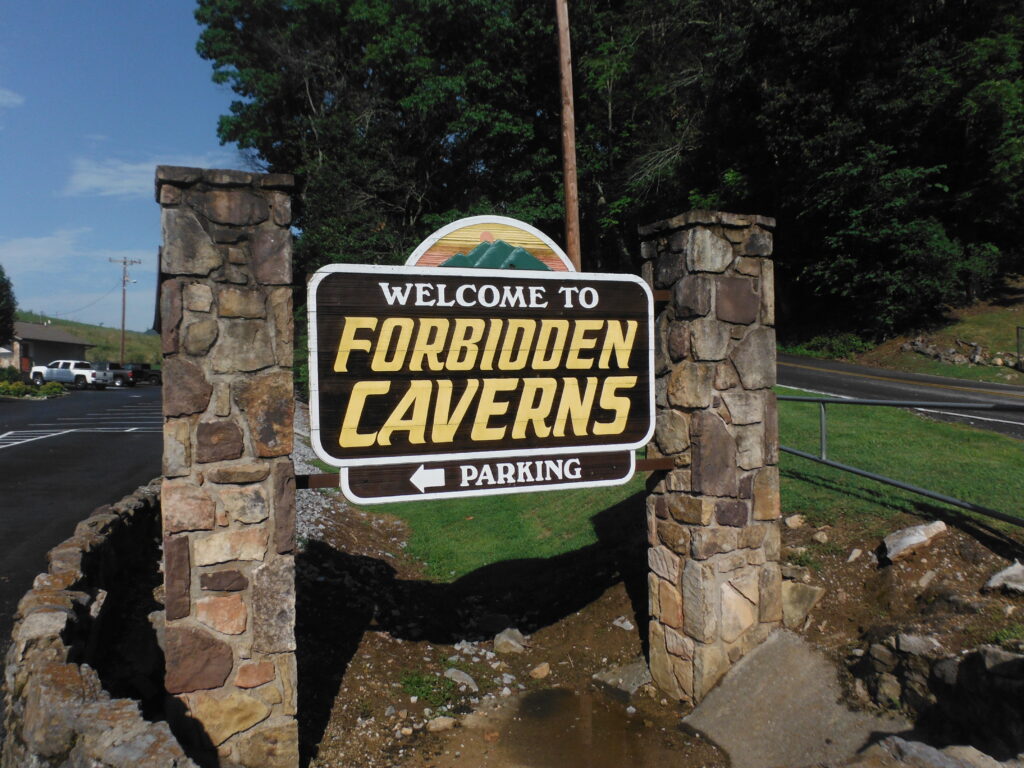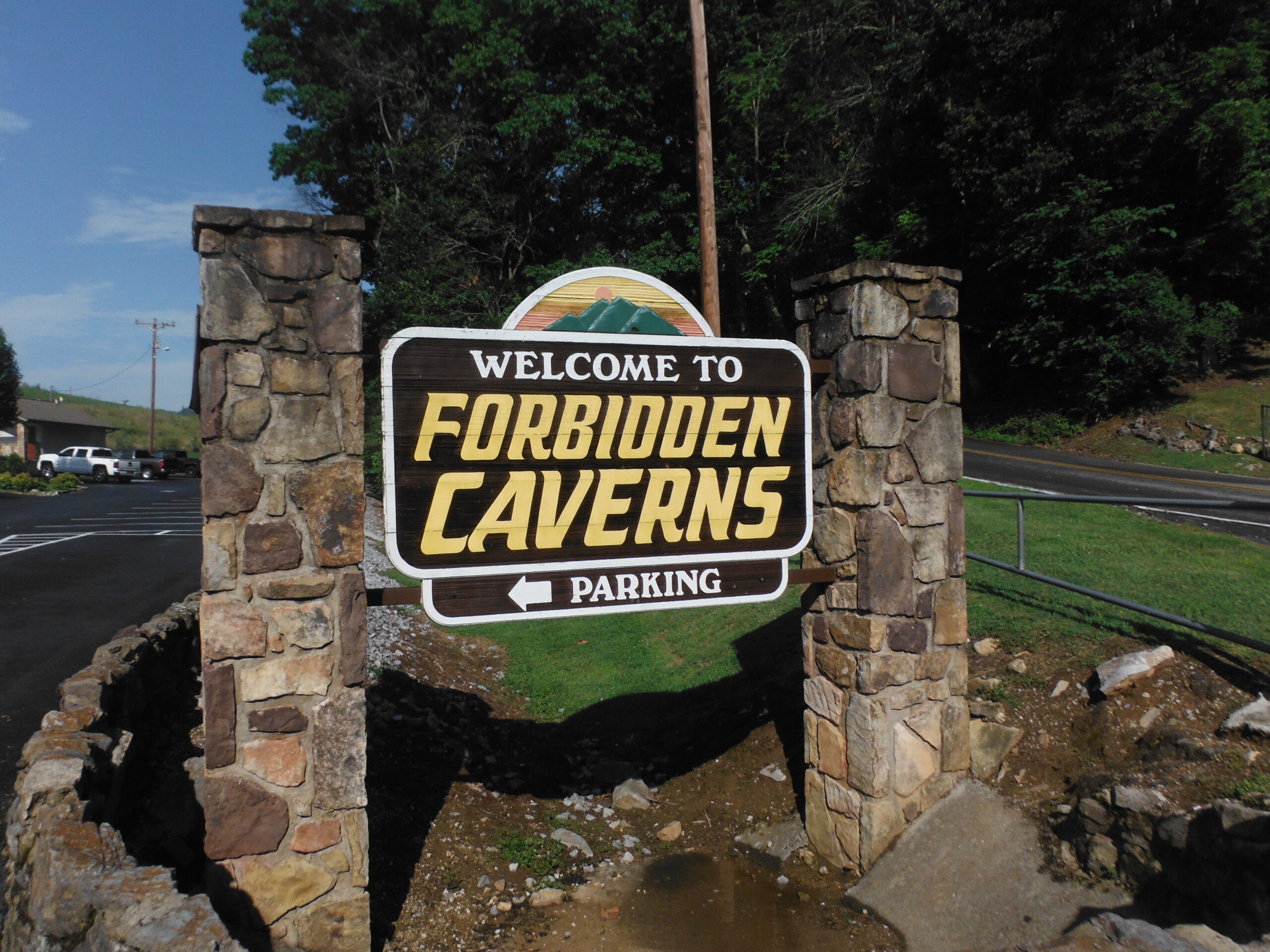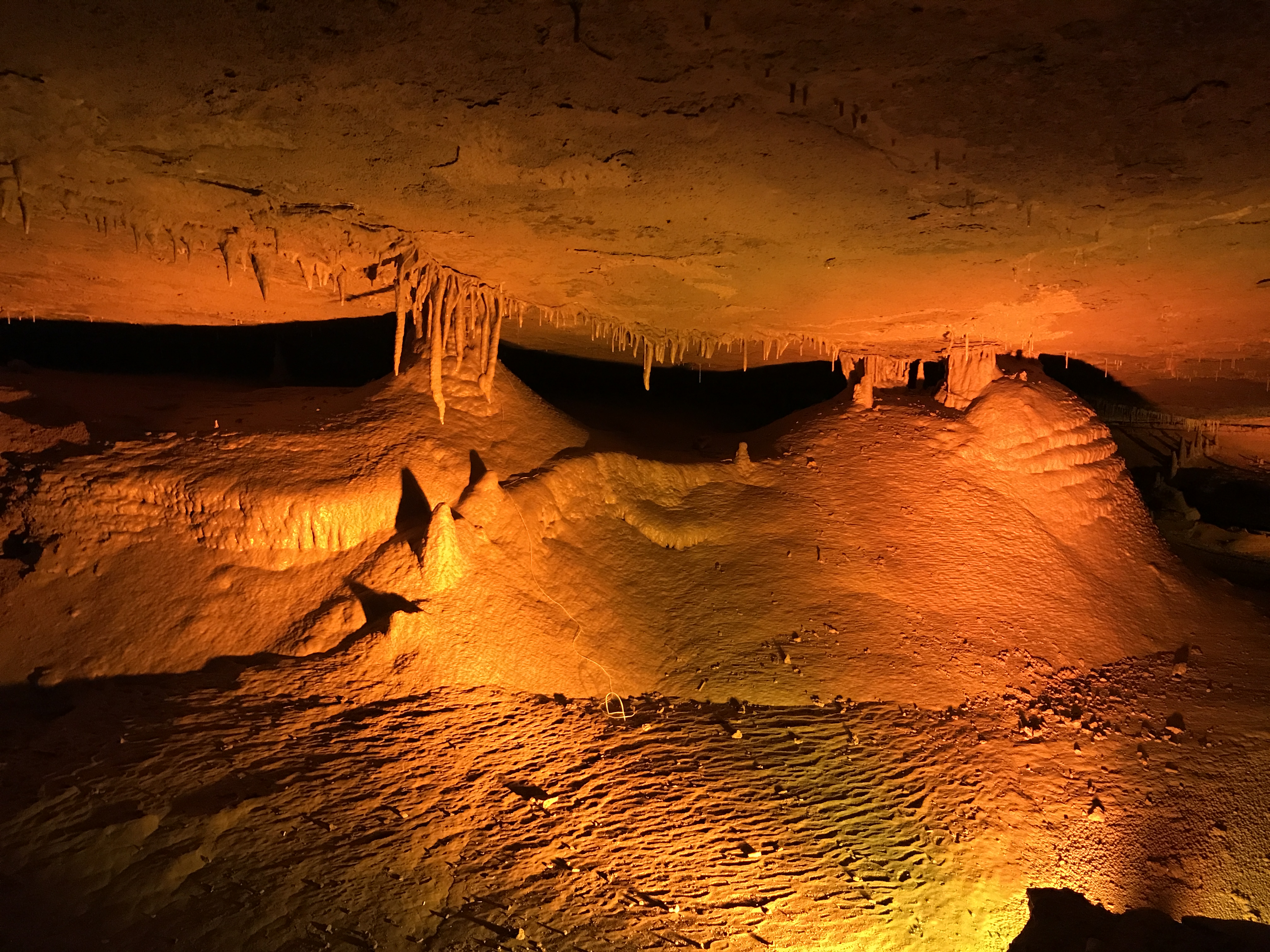
Forbidden Caverns is a popular tourist attraction located in Sevierville, Tennessee, USA. It is a fascinating underground cavern system that offers visitors the opportunity to explore natural formations, underground waterfalls, and unique rock formations.
We visited this place during our stay in Gatlinburg, as this location is just a short drive away and it was pretty fascinating.
Forbidden Caverns were formed millions of years ago by the erosive action of an ancient underground river. Over time, the water carved out impressive passages and chambers through the limestone bedrock, leaving behind breathtaking formations. At some point moonshiners use to inhabit these caves and there are still remnants from their “business”. They would block the river inside the cave and be completely out of sight.

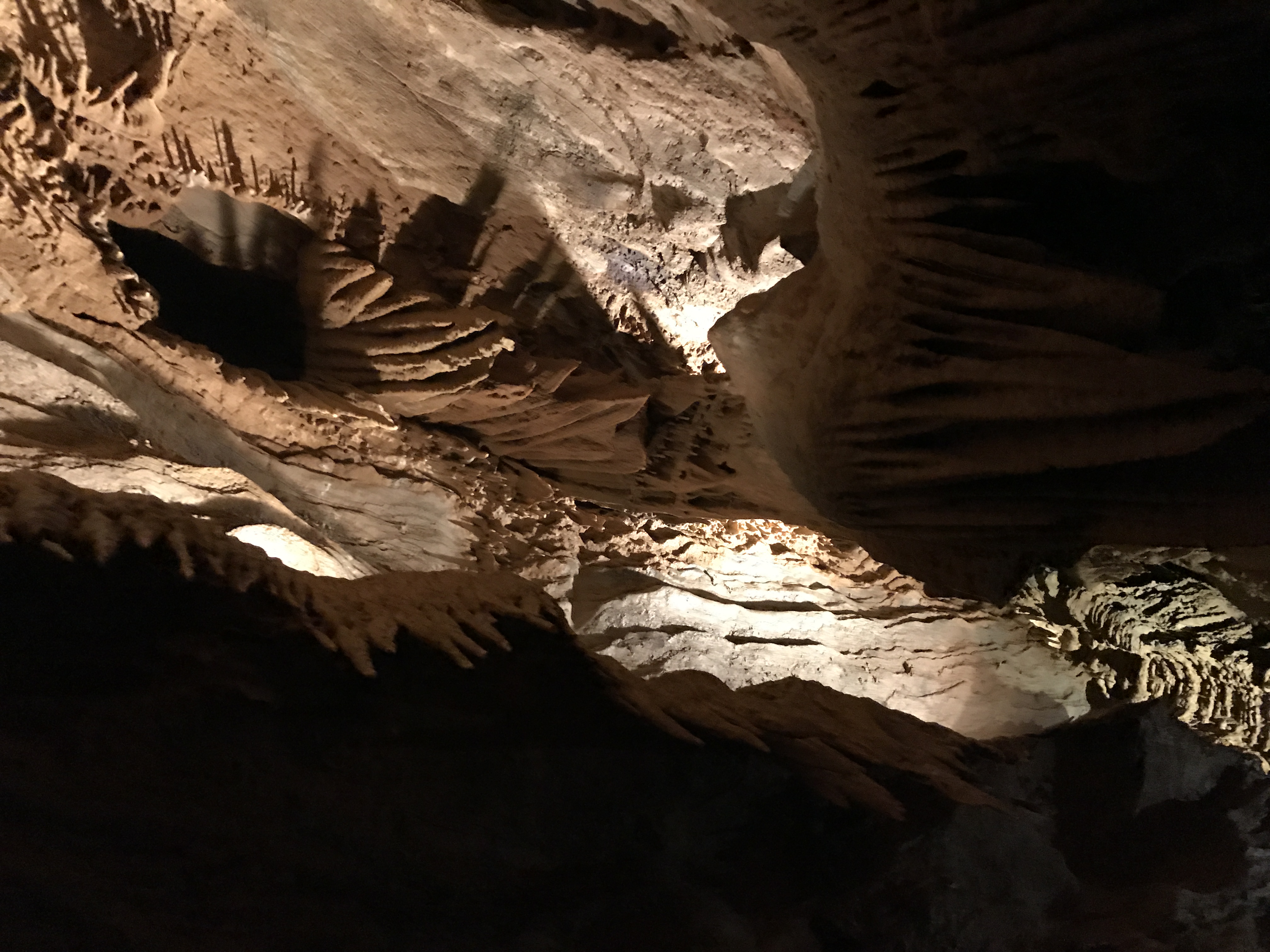
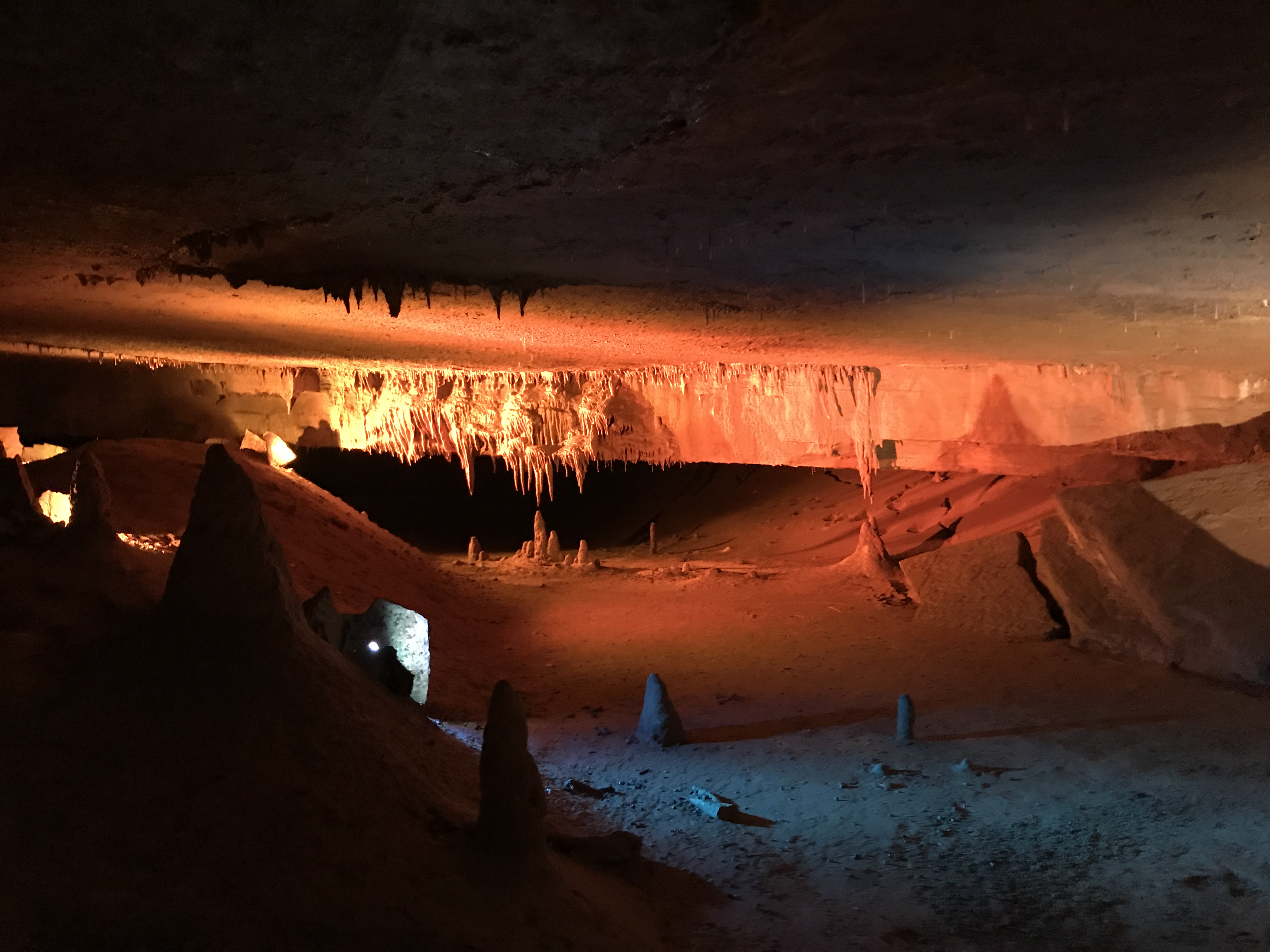

Stalactites and Stalagmites: The caverns are adorned with a variety of stalactites (icicle-shaped formations that hang from the ceiling) and stalagmites (formations that rise from the cave floor). These formations were created over thousands of years as mineral-rich water dripped from the cave ceiling and left deposits on the floor.
The caverns have a rich history, and various legends and stories are associated with them. Some tales narrate how the caves were used by Native Americans, while others describe how they were used as a hiding place by outlaws during the Civil War era.
So what are stalactites and stalagmites? Stalactites and stalagmites are mineral formations that develop in caves, caverns, and other underground spaces over long periods of time. They are both types of speleothems, which are structures formed from minerals deposited by dripping water.
Stalactites: Stalactites are formations that hang from the ceilings of caves like icicle-like structures. They form when mineral-rich water drips from the ceiling and leaves behind mineral deposits as the water evaporates. Over time, these deposits accumulate and elongate, creating the characteristic tapered shape of stalactites. The minerals responsible for stalactite formation are typically calcium carbonate, derived from dissolved limestone or other calcareous rock formations. Stalactites can vary in size, shape, and color, depending on the minerals present and the environmental conditions of the cave.
Stalagmites: Stalagmites, on the other hand, are formations that grow upward from the floor of a cave. Like stalactites, they also result from the accumulation of mineral deposits left behind by dripping water. The water that drips onto the cave floor carries dissolved minerals, which are deposited as the water evaporates. Over time, these deposits build up, creating upward-growing formations that often resemble columns or pillars. Stalagmites can also come in various sizes and shapes, influenced by factors such as mineral content, water flow, and the local cave environment.
The distinction between stalactites and stalagmites is easy to remember: stalactites hold “tight” to the ceiling, while stalagmites “might” grow to reach the ceiling. These formations are not only visually captivating but also serve as indicators of the geological processes that shape the underground world. The intricate beauty of stalactites and stalagmites can be found in many caves and caverns around the world, adding to the allure and wonder of subterranean exploration.
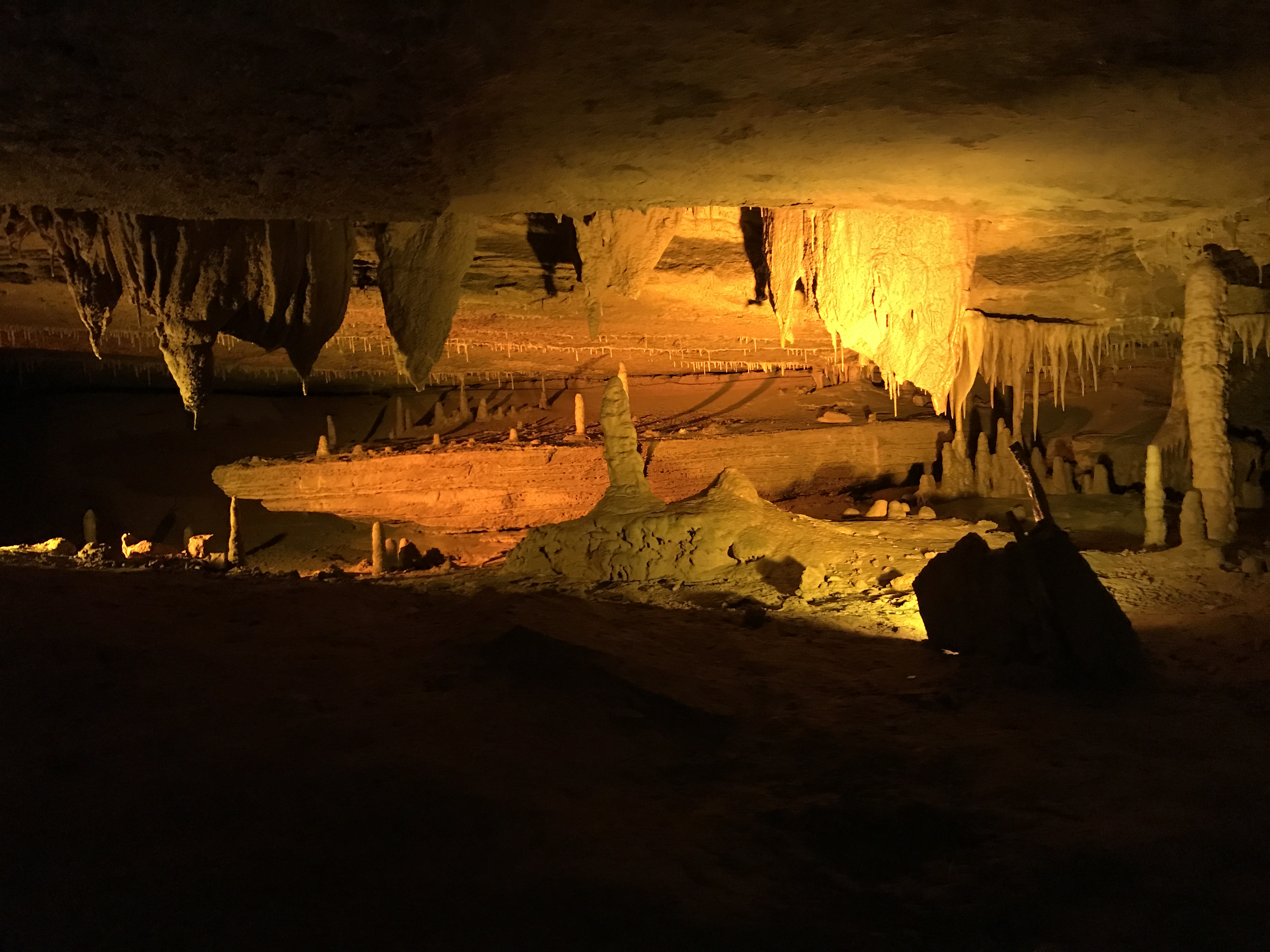
Sevierville, a charming town located in Tennessee, is situated within a region known for its unique geological features, including limestone and karst landscapes. This geological composition has contributed to the formation of caves and caverns in the area, which in turn provide suitable conditions for the development of stalactites and stalagmites.
Limestone, a sedimentary rock, is particularly prone to dissolution by water over time. When rainwater or groundwater comes into contact with limestone, it can create a mildly acidic solution that gradually dissolves the rock, forming underground cavities and passages. As water drips through these underground spaces, it carries dissolved minerals, primarily calcium carbonate, which is a common component of limestone. When the water drips and evaporates within the cave, it leaves behind these minerals, leading to the gradual growth of stalactites and stalagmites.
Sevierville and its surrounding areas are home to several caves and caverns that exhibit these remarkable formations. For example, the Forbidden Caverns, located just outside of Sevierville, is a popular tourist destination that showcases intricate formations, including stalactites, stalagmites, and other speleothems. These caves provide the ideal environment for these formations to develop, with a delicate balance of water, minerals, and time.
The presence of stalactites and stalagmites in Sevierville’s caves adds to the area’s natural beauty and its appeal as a destination for cave enthusiasts and curious travelers. Exploring these formations offers visitors a glimpse into the fascinating processes that shape the underground world and a deeper appreciation for the geology that underpins the region’s unique landscape.
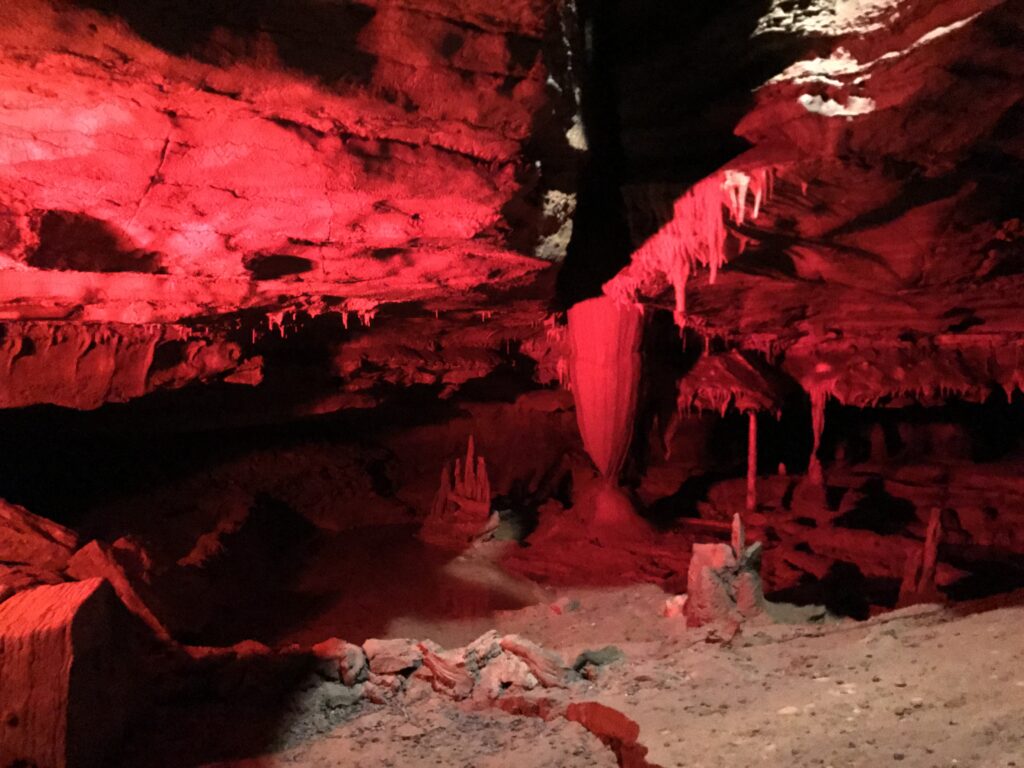
There are other caverns in this area:
- Tuckaleechee Caverns: Located in Townsend, a neighboring town to Sevierville, Tuckaleechee Caverns is known for its expansive chambers and intricate formations. Visitors can explore well-lit paths that wind through the cavern’s various rooms, where they can marvel at towering stalagmites, shimmering flowstone, and even an underground stream.
- Raccoon Mountain Caverns: Situated a bit farther away in Chattanooga, Raccoon Mountain Caverns offers a unique experience with both walking tours and wild caving adventures. The walking tour leads visitors through a portion of the caverns, showcasing stunning formations like the Crystal Palace and Waterfall Dome. For more adventurous souls, the wild caving tour provides an opportunity to explore undeveloped sections of the cave with a guide.
- Cumberland Caverns: Located in McMinnville, Cumberland Caverns is about a two-hour drive from Sevierville. This extensive cave system boasts a range of formations and features, including the impressive “Volcano Room,” which is home to one of the largest underground stages in the United States. The caverns also host live music events, making for a unique concert experience.
- Indian Cave State Park: A bit further away in Tallassee, Indian Cave State Park offers a chance to explore not only caves but also a variety of outdoor activities. Visitors can take guided tours of the cave, admiring formations such as flowstone, columns, and rimstone pools. The park’s scenic setting along the Tellico River adds to the overall experience.
These caves and caverns near Sevierville provide a window into the fascinating world that lies beneath the surface. Whether you’re an avid caver or simply curious about the natural wonders that exist underground, these destinations offer a chance to discover the intricate beauty of formations that have been sculpted over millennia.
